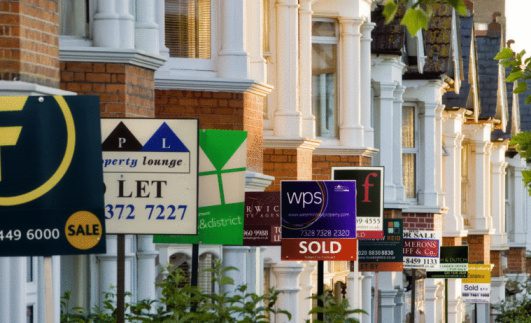For many, owning a home is a dream that feels impossible.
With the average UK home costing £285,000 – and an ex-council house in London recently selling for a cool £3.5million – becoming a member of Generation Rent feels inevitable.
But, saving up for a huge deposit and buying your own home isn’t the only way to get on the property ladder.
Shared ownership mortgage schemes allow you to buy a part of your property, while still paying rent to a landlord, local council or housing association. In some cases, this means saving up for a deposit of just 5% of your share of the home.
Metro.co.uk’s property expert and writer, Andrea Dean, is here to tell you everything you need to know about shared ownership…
What is a shared ownership mortgage?
Shared ownership gives first-time and other buyers the chance to purchase a share in a leasehold property. They take out a mortgage on the share they buy and pay rent on the remaining part, usually to a housing association.
Why choose a shared ownership house?
It’s the most affordable way to get or stay on the housing ladder if you don’t earn enough or have enough savings to buy on the open market. Both the mortgage and deposit are much smaller: the deposit’s typically five or 10 per cent of the share you’re buying and the rent’s subsidized. Monthly mortgage and rent combined work out cheaper than a mortgage alone would.
Who’s eligible for a shared ownership mortgage?
First-time buyers, existing owners who are selling and former homeowners who are unable to cover the cost of a property with a deposit and mortgage only. You must be 18 or above, have a good credit history and annual household income can’t exceed £90,000 in London or £80,000 everywhere else in England.
What size share can I buy?
At most developments the minimum initial share is 25 per cent of the full market price – though 10 per cent shares are gradually being introduced – and the maximum is 75 per cent. You must buy the biggest share you can afford, which is calculated after a financial assessment. There’s no restriction on the number of bedrooms.
What types of shared ownership houses are on offer?
Both dedicated new-build and resale properties are part of the scheme. New-builds are often sold off-plan, so you won’t get to see your exact home before committing to buy, though the show home should have the same spec. Resales are sold by existing shared owners and you’ll be required to buy an equal or larger share than the person you are buying from.
How do I apply for a shared ownership mortgage?
Register with sharetobuy.com to search for shared ownership homes nationwide and with housing associations covering the areas you want to live in. Some prioritize applicants currently living or working within the borough. Once you’ve found somewhere you like and have proved eligibility, the housing association will guide you through the process.
Can shared owners buy more shares?
Definitely! This is called staircasing and extra shares are normally purchased in increments of 10 per cent, and financed through savings or remortgaging. The cost of the new shares is based on the market value of the property at the time of staircasing, and you’re liable for legal and valuation fees. Reaching 100 per cent means you own your home outright, and won’t pay any rent.
What occurs when I want to sell?
Unless you have increased your ownership to 100 percent, the housing association – your landlord – will try to sell your home first, for a period of up to 12 weeks. You will need to have it appraised so that the value of your share can be determined. If no buyer is found during this time, you are able to sell it yourself through a real estate agent.
What is being altered about shared ownership?
In 2021, the government introduced a new shared ownership model aimed at making the scheme more accessible to a larger number of people, and reducing maintenance and staircasing fees. It decreased the minimum initial share size from 25 percent to 10 percent and lowered the minimum portion you can buy when staircasing from 10 to five percent.
There is also a new type of staircasing in which you can buy an additional one percent of your home each year with significantly reduced fees, and shared owners now have more control when selling.
Housing providers are obligated to contribute to the cost of essential repairs and maintenance for 10 years, which was previously the responsibility of shared owners. The majority of new shared ownership homes still follow the old model, but make sure to check when making a purchase.
Do you have an anecdote to share?












